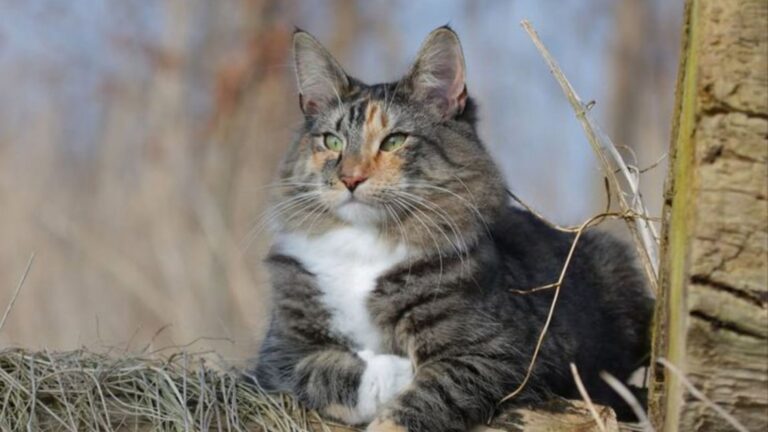What Rare Creatures Call Texas’ Wildest Corners Home?
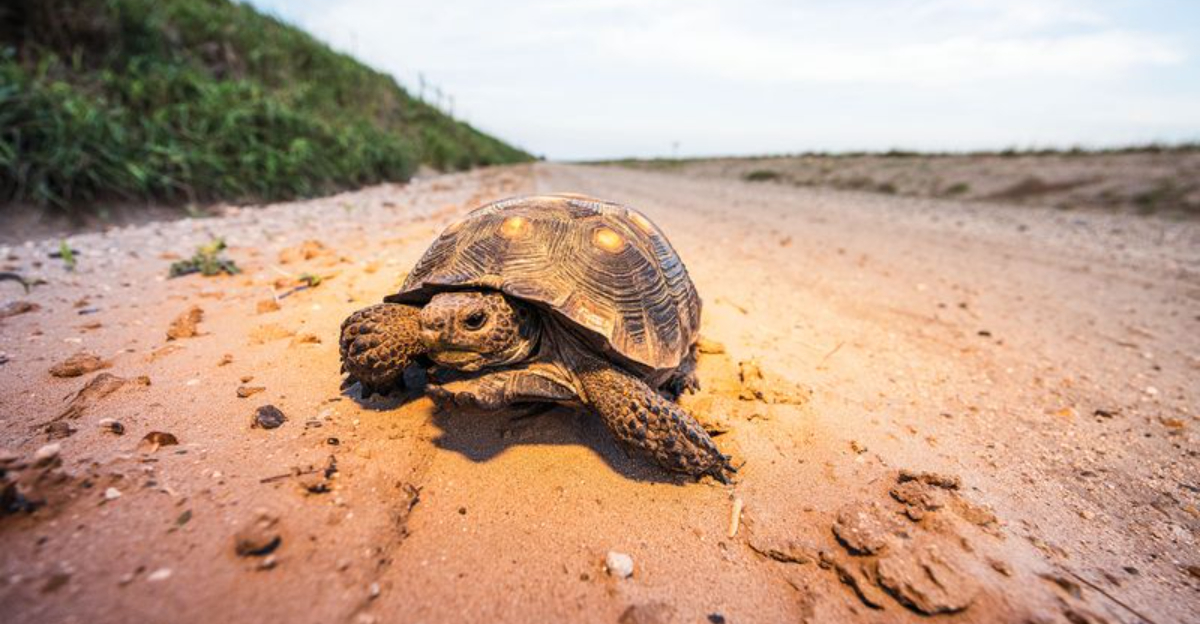
Hidden within Texas’s vast wilderness lives an extraordinary collection of rare and elusive creatures. From mysterious big cats to endangered reptiles, these animals have found refuge in the state’s most remote habitats.
Join us on a journey to discover the remarkable wildlife that makes Texas’s wild corners so special.
1. Elusive Spotted Shadow
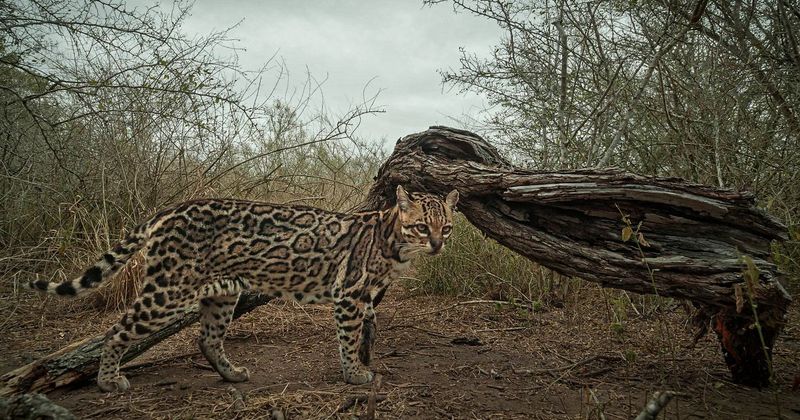
Twice the size of house cats but equally fond of napping, ocelots prowl the dense brush country of South Texas. Their stunning gold coats with black rosettes provide perfect camouflage in dappled forest light.
Only about 50 remain in Texas, primarily in the thornscrub habitat of the Rio Grande Valley. These endangered felines hunt mostly at night, feasting on rabbits, birds, and small rodents.
2. Crimson-Spotted Amphibian Mystery
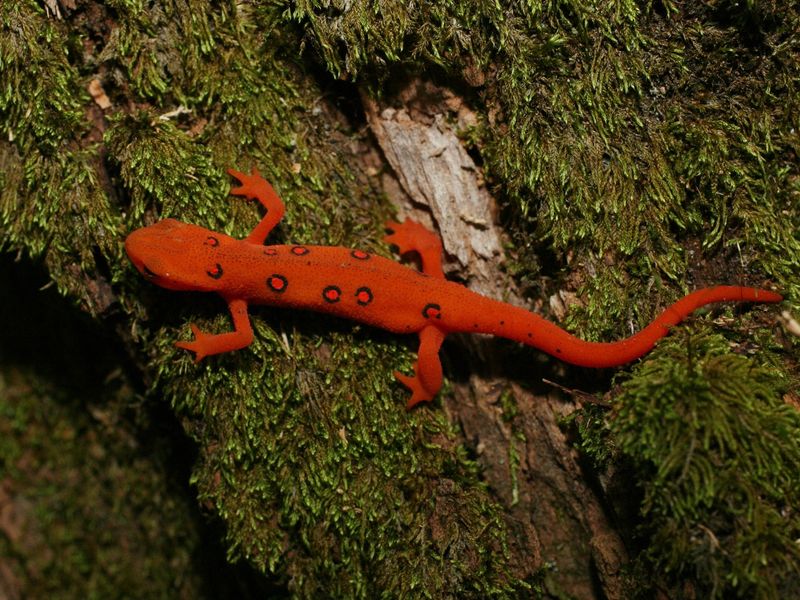
Imagine a creature that looks like it’s wearing a necklace of ruby gemstones! Black-spotted newts display brilliant red dots along their sides that warn predators of their toxic skin.
Found exclusively in seasonal ponds of South Texas, these endangered amphibians spend most of their lives underground. During brief rainy periods, they emerge to breed, transforming ephemeral pools into newt nurseries.
3. Crown Jewel Of Texas Reptiles
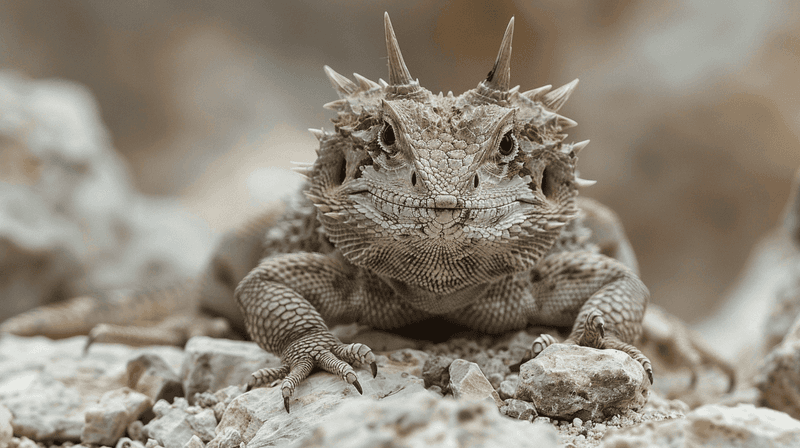
Like tiny dinosaurs roaming the Texas plains, horned lizards sport spiky crowns that earned them the nickname “horny toads.” These flat-bodied reptiles shoot blood from their eyes when threatened – nature’s most unexpected defense mechanism!
Once common across Texas, they’ve disappeared from many areas due to habitat loss and imported fire ants eliminating their food supply.
4. Desert Ghost Of The Mountains
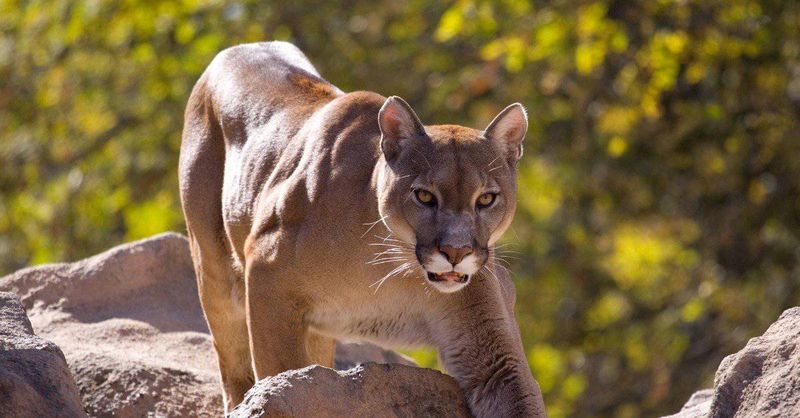
Silent shadows stalk the rugged Trans-Pecos region where mountain lions maintain their mysterious presence. Despite weighing up to 150 pounds, these powerful cats move like whispers through the landscape, rarely seen by human eyes.
With territories spanning up to 370 square miles, these solitary hunters need vast wilderness to survive. Their populations persist in Texas’s most remote mountain ranges and deep canyons.
5. Bouncing Night Wanderer

Hop, hop, hopping through the night, these furry little creatures move like miniature kangaroos on powerful hind legs! Texas kangaroo rats use their long tails for balance while gathering seeds to store in their underground burrows.
Found nowhere else on Earth except north-central Texas, these rare rodents face extinction as agriculture transforms their native shortgrass prairie habitat into farmland.
6. Aerial River Of Wings
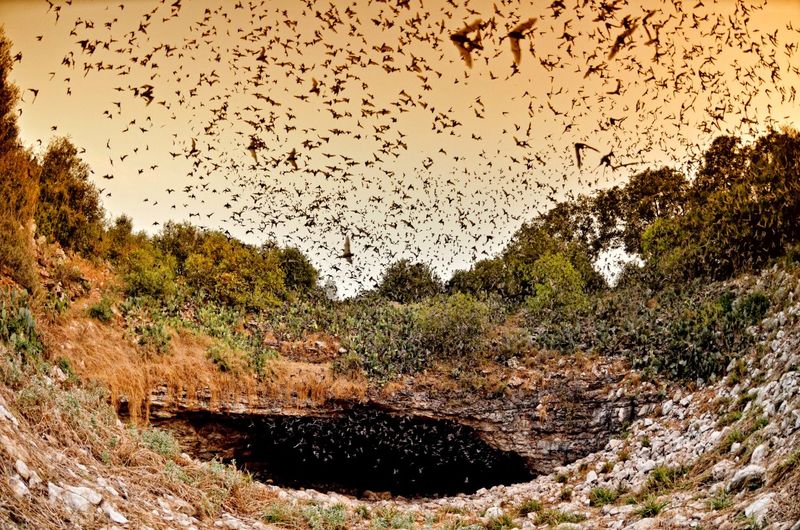
When summer evenings arrive in central Texas, the sky darkens with millions of tiny silhouettes emerging from Bracken Cave. Mexican free-tailed bats form living rivers in the air – the largest concentration of mammals anywhere on Earth!
These speed demons can fly up to 60 mph and travel 100 miles nightly. Their massive colonies consume tons of agricultural pests, saving Texas farmers millions in crop damage.
7. Gentle Giant Of The Brush Country

Glistening blue-black scales catch the sunlight as this magnificent serpent glides through the underbrush. Growing up to 8.5 feet long, Texas indigo snakes are the largest native snakes in the state, yet completely harmless to humans.
These beneficial reptiles feast on rattlesnakes and other venomous species. Protected by state law, they face threats from habitat fragmentation and people who mistakenly kill them out of fear.
8. Phantom Cat Of The Borderlands
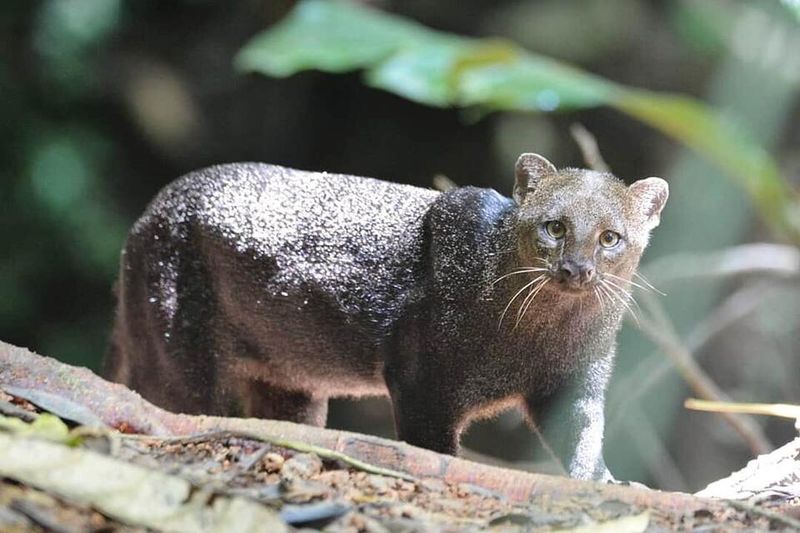
Smaller than a cougar but larger than a housecat, the jaguarundi moves with the fluid grace of flowing water. These unusual felines lack spots, instead sporting solid reddish-brown or slate-gray coats that help them vanish into the shadows.
Extremely rare in Texas, these secretive cats might be glimpsed in dense thornscrub along the Rio Grande. Scientists debate whether any breeding populations still exist in the state.
9. Subterranean Pale Explorer
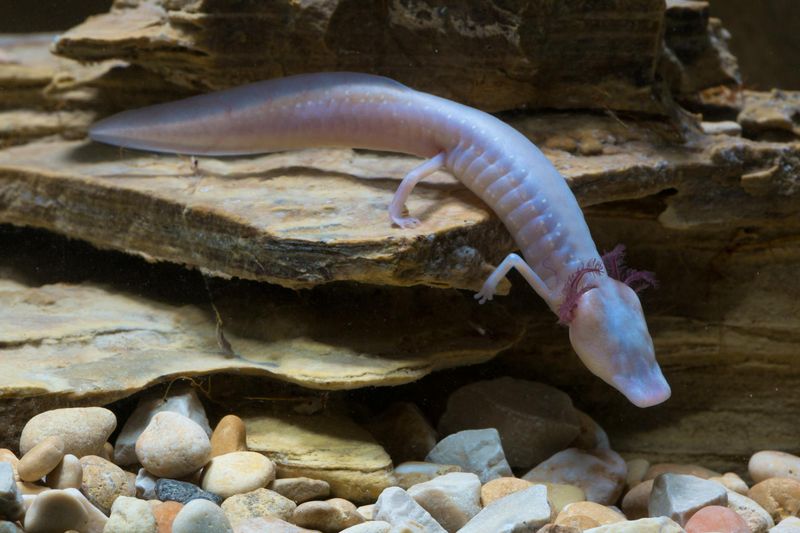
Beneath the Edwards Aquifer, a bizarre creature navigates total darkness with no eyes at all! Blind Texas salamanders have evolved translucent skin and external gills that appear like delicate pink feathers floating around their heads.
These cave-dwelling amphibians sense vibrations to locate tiny crustaceans to eat. Found nowhere else on Earth except San Marcos, they’re extremely vulnerable to groundwater pollution and habitat disturbance.
10. Prairie Dancer On The Edge

During spring mating season, male Attwater’s prairie chickens transform into extraordinary performers! They inflate bright orange air sacs on their necks, stamp their feet rapidly, and produce haunting “booming” calls that carry across the grasslands.
Once numbering nearly a million birds, fewer than 100 remain in the wild. These endangered ground-nesters struggle to survive as coastal prairies disappear beneath development and invasive plants.
11. Forest Guardian’s Return

After nearly a century’s absence, black bears are making a comeback in East Texas forests. These intelligent mammals can smell food from over a mile away and have remarkable memories for finding fruit trees and berry patches year after year.
Primarily vegetarian despite their fearsome reputation, Texas black bears feast on nuts, berries, and insects. Conservation efforts have helped small populations establish in the remote woodlands of the Pineywoods region.
12. Winter Grassland Visitor
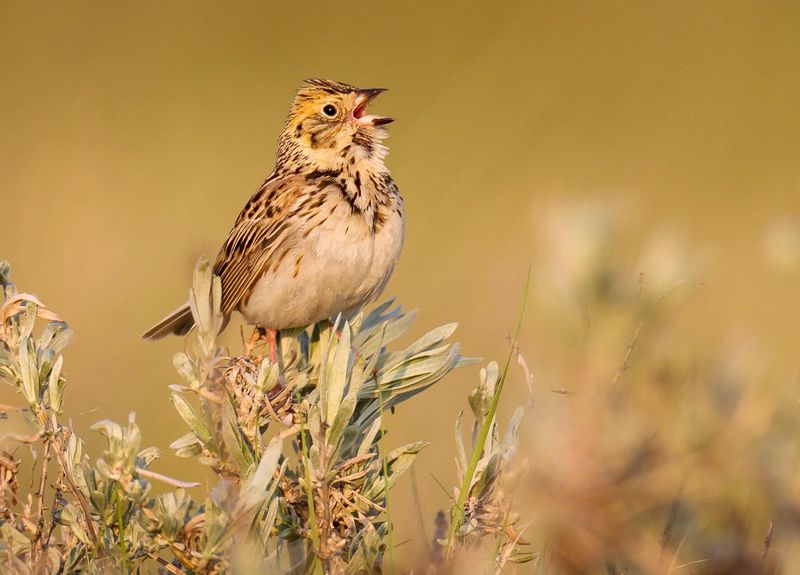
For just a few precious winter months, Baird’s sparrows grace the golden grasslands of far West Texas. These secretive songbirds prefer to run mouse-like through dense grass rather than fly, making them one of North America’s most difficult birds to spot.
Their delicate songs sound like whispered secrets carried on the prairie wind. Conservation efforts focus on protecting their wintering grounds from overgrazing and development.
13. Ancient Shell-Bearer Of The Brush
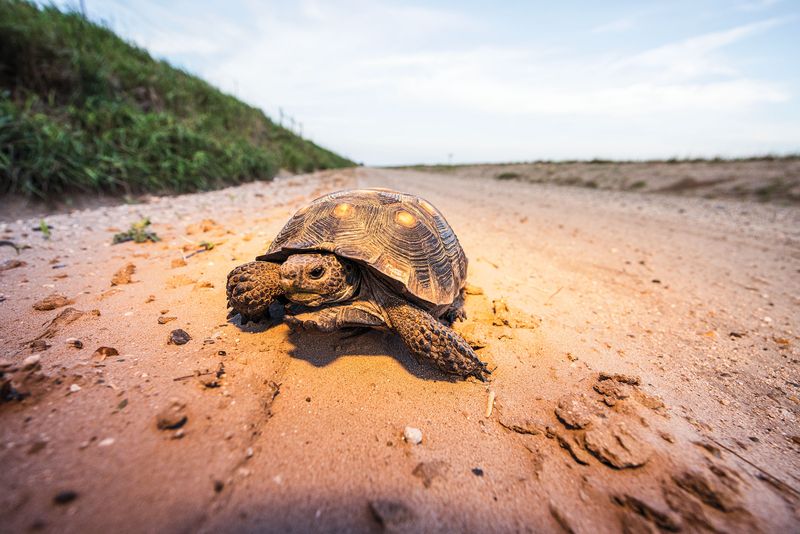
Moving at nature’s most deliberate pace, Texas tortoises carry dome-shaped homes that have remained virtually unchanged for millions of years. During summer heat, these resourceful reptiles dig deep burrows that provide shelter for dozens of other species.
As Texas’s only native tortoise, they face threats from collection for the pet trade and vehicle strikes. Protected by state law, these gentle creatures can live over 60 years in the wild.
14. Vanishing Voice Of The Wild
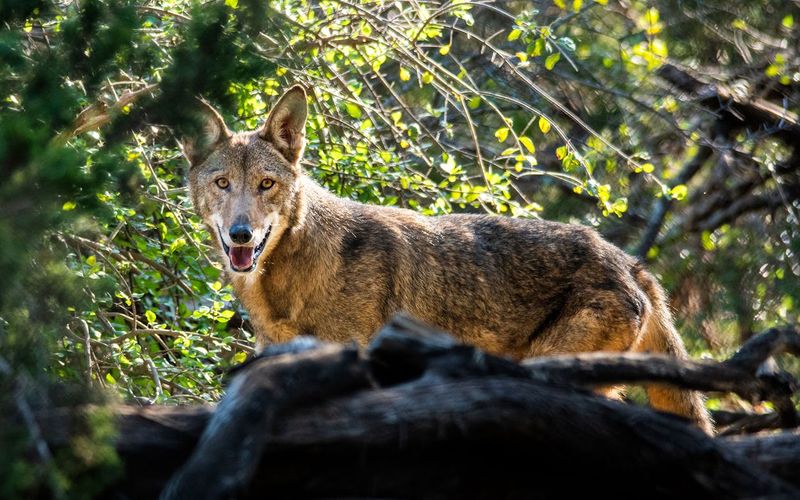
Haunting howls once echoed across Texas landscapes as red wolves announced their territories under starlit skies. These rusty-colored predators, smaller than gray wolves but larger than coyotes, once kept ecosystems in perfect balance.
Declared extinct in the wild by 1980, pure red wolves survive only through captive breeding programs. Scientists debate whether any pure genetic lineage remains in isolated Texas regions where wolf-coyote hybrids roam.




